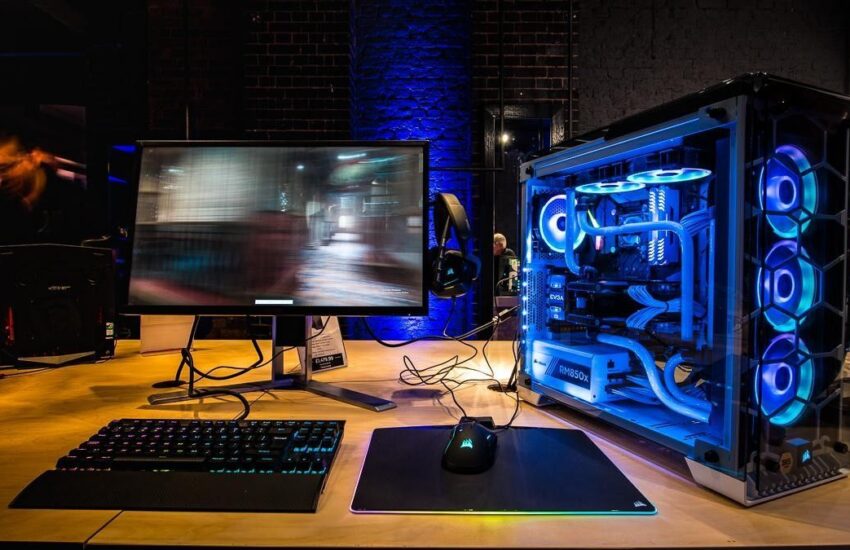A 240Hz monitor offers an immersive experience with a slight advantage in response time. The model best suits gaming due to its high refresh rate, clear motion, low input lag, etc. It smooths fast-paced gaming and suits adventurous titles like One Finger Death Punch, Ghostrunner, Ultrakill, Katana Zero, etc. Do you like to explore the features?
There are multiple features of 240Hz gaming monitors that support ultrawide gaming. These features include a wide display size, HD resolution, an IPS panel, faster response time, higher refresh rates, etc. Go through the article to get more insights on features.
Fast Reaction Times
In gaming, reaction time refers to the difference between targeting and hitting an enemy. Typically, the fastest possible human reactions range from 0.15s to 0.2s. When it comes to critical gaming, a fraction of a second matters. Thanks to a 240Hz gaming monitor that allows gamers to spot and track targets more easily. They can also hit targets faster due to the smoother display and fluid gaming experience.
Sharp Images
The ideal sharpness depends on the gamer and the game that is going on. Most gamers go for sharper settings that make views clearer. If you also fall into the category of serious gamers, go for a 240 Hz device with a higher refresh rate. A display’s refresh rate refers to the quality of drawing a new image in a fraction of a second. With high speeds, you can avoid blurry pictures on the monitor. Gaming enthusiasts can take notice of higher refresh rates as their brain perceives a sharper image.
Eliminate Screen Tearing
Screen tearing refers to visual artifacts in a visual display. Simply put, it happens when your monitor’s refresh rates and GPU frame rates are incompatible. There are other reasons, too, such as configuration issues, the disparity in the frame rates of your device, and so on.
Thanks to the faster refresh rates of 240Hz monitors, which address this issue, With higher refresh rates, tears are automatically removed from your screen.
Lowers Input Lag
Input lag is an essential feature of gaming. It determines the delay of response between your controller and screen in milliseconds. Lower input allows for a faster response. A high refresh rate boosts the number of individual frames that your monitor displays in a fraction of seconds. Likewise, displaying more frames in a second minimizes the delay between inputting a command and seeing its result on screen.
Speedy Refresh Rates
The monitor’s refresh rate is how often the monitor refreshes the image on a screen. A higher refresh rate means better, more accurate, and faster displays. The refresh rate of your monitor has plenty to do with your gaming performance.
60 Hz, 144 Hz, and 240 Hz are standard refresh rates for gaming monitors.
Response Time
Response time plays a great role in gaming. Specifically, Lenovo 240Hz gaming monitors offer stellar response times. This means you will get all the moments of your game, and this concept is crucial for competitors.
Competitive gamers need a clear, fast image display. Some gaming monitors offer response overdrive, an excellent option for those who enjoy fast-paced gaming.
Most models have motion-blur reduction options to keep your fast games looking clear and crisp.
G-Sync Compatibility
240Hz monitors usually have all the bells and whistles that gamers need, like low input lag, fast refresh rates, and G-Sync or FreeSync compatibility.
The Lenovo Legion series comes on the list of most responsive monitors. These monitors have the features of incredible G-SYNC technology. In short, G-SYNC is an adaptive, hardware-based technology that automatically refreshes your screen. This technology keeps you from screen tears and stuttering during even fast-paced gaming.
In-Plane Switching
As LCD technology has developed, monitor IPS or in-plane switching, isn’t mainly known for its low response time. However, it doesn’t cause issues for most of the games.
Eye-Care Technology
Thanks to the refresh rates of a 144 Hz monitor, your screen images are easy to see. A refresh rate of 120 Hz is optimal for reducing eye strain and clarifying ideas.
Excellent Pixel Density Ratio
The pixel density ratio refers to the ratio between physical pixels on the screen and the device’s independent pixels. A 27-inch computer monitor offers a pixel density of 88 PPI.
Typically, an average pixel density of 95 to 110 PPI is enough for every gamer. It gives you a real-life touch to gaming. You can easily enjoy the details of every game with the help of high pixel density. Here we are considering the importance, of which you may be unaware:
The optimum number of PPIs depends on the monitor size and the type of game you are playing.
An average PPI of 95 to 110 is optimum for every gamer.
Response Time
Response times refer to the time it takes for a pixel to change its color automatically. Generally, bigger screens offer lower response times that suit serious gamers who need super-quick responses. A response time lower than 5 ms is ideal for gaming displays. A 27-inch model offers a super-fast response time of 1 ms. You can view the fastest screen motion. With a lower response time, gamers can get better picture quality without blurry images. Here we are listing additional benefits of response time for gaming:
- It offers a fluid viewing experience while playing multiplayer games
- Maintains balance between the picture quality of heavy-duty games
- It helps in delivering high FPS (frame per second)
Bottom Line
A 240Hz gaming monitor offers you a range of benefits like high resolution, excellent responsiveness (with frames per second), compatibility with modern games, etc. So, if you want to take your gaming to a great level, go for a 240Hz gaming PC. It has a lag of 120 Hz, which is one-quarter of its display. So, it doesn’t affect your gameplay experience a bit more.

